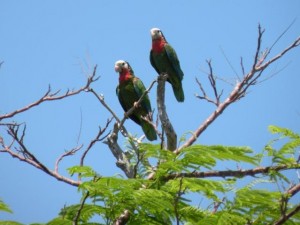View Source | October 22, 2015
 A study published this week in the Proceedings of the National Academy of Sciences explores the relative impacts of natural climate change and direct human activity on animal-species extinction.
A study published this week in the Proceedings of the National Academy of Sciences explores the relative impacts of natural climate change and direct human activity on animal-species extinction.
The study is co-authored by Janet Franklin, a distinguished sustainability scientist and Regents’ Professor in the School of Geographical Sciences and Urban Planning. Franklin and her team examined the remains of 95 species of ice-age vertebrates from Sawmill Sink, a flooded sinkhole cave on Abaco Island in the Bahamas. Thirty-nine of those species no longer exist on the island.
The team concluded that the increasing warmth and wetness of Abaco's climate, coupled with rising sea levels that occurred from 15,000 to 9,000 years ago during the transition from the last ice age to the present climate, probably led to the disappearance of at least 17 of the species. The other 22, however, disappeared within the past 1,000 years - signaling a relationship to humans' appearance on the island and rapid subsequent changes to which these species could not adapt.

